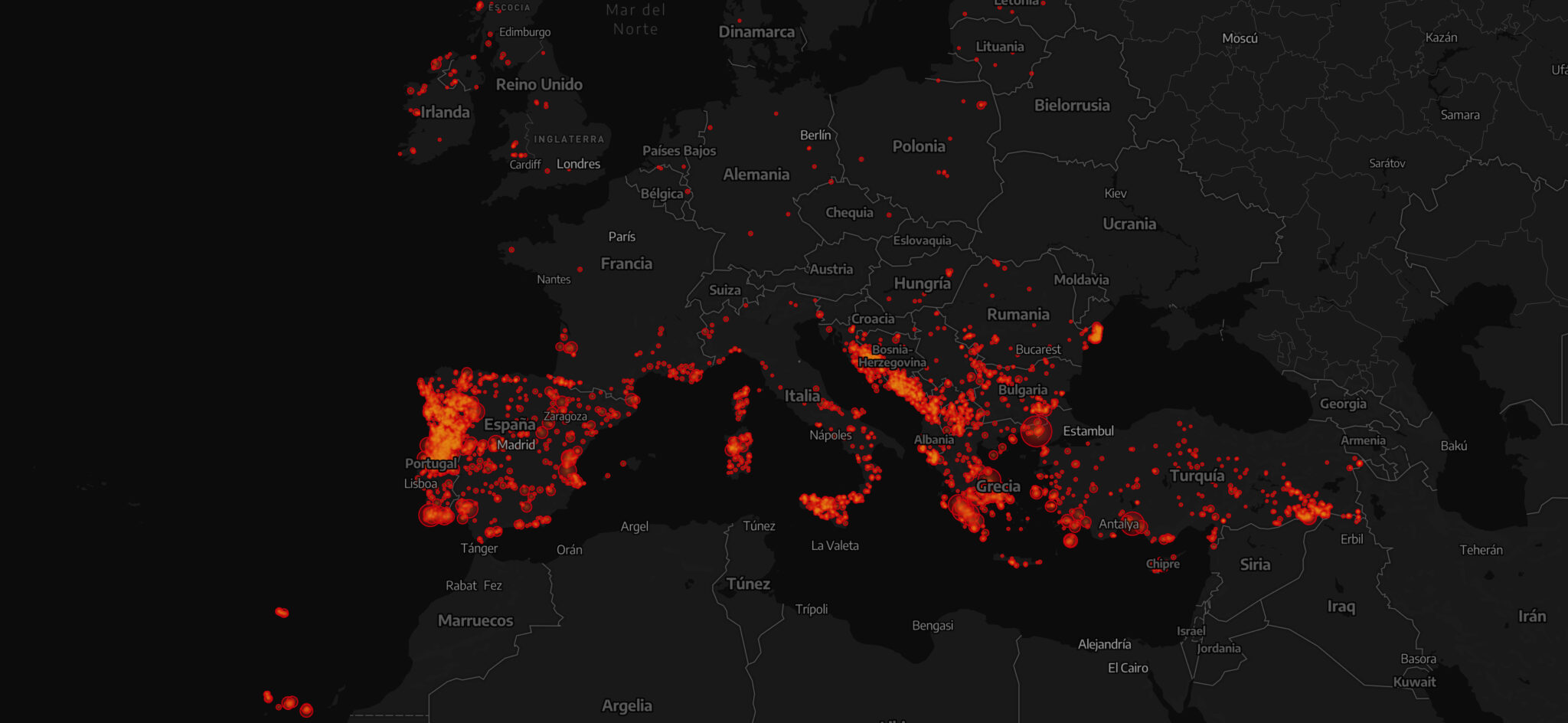This article is part of a series of three articles from El Diario’s larger multimedia project on mega-fires in Europe by Mariangela Paone, Raúl Rejón, Sofía Pérez and Raúl Sánchez. Introduction | Part I | Part II | Part III
Fueled by strong winds and high temperatures, the fire started near the town of Alexandroupolis and spread rapidly through the region, sweeping across nearly 100,000 hectares, destroying homes and turning vegetation into scorched earth.
This fire represents Europe’s new forest danger. Mega fires burning an area equivalent to 700 soccer fields. Two out of every three hectares burned on the continent are caused by these large fires.
Each red bubble you see represents a fire of more than 500 hectares that has occurred in Europe since 2000.
In the last 20 years, satellites have detected more than 4,200 fires of more than 500 hectares, the so-called large forest fires (GIF). And the trend is upward: there are more and more large fires and, above all, they are increasingly devastating and uncontrollable.
This is another of the already visible effects of climate change that is creating a vicious circle with forest fires. The climate crisis generates conditions that favor the spread of fire with increasingly longer high-risk seasons. And the fires themselves release large amounts of CO2 into the atmosphere, which feeds back into the circle.
It is also changing the way they spread. Some have already been included in the so-called sixth generation fires, events that modify the meteorological conditions of the area. “Fire cloud with a life of its own,” calls them the expert of the Geography, Policy and Socioeconomics of Forestry Research Group at the Complutense University of Madrid, Critina Montiel.
These are fires that become “inextinguishable” due to the amount of fuel, the temperatures they reach and the winds that fuel them. In addition, they can generate extreme phenomena such as the formation of pyrocumulus that can lead to firestorms, as occurred in the fire that occurred in the Sierra Culebra (Zamora) in 2022.
The areas most affected by these large fires are concentrated in southern Europe. Three countries accounted for 57% of the nearly 8 million hectares burned in large fires between 2000 and 2023: Spain, Greece and Portugal.
They are also the three countries with the highest average area burned per fire. In other words, not only are these the territories where the largest fires occur, but when they do, they burn more violently.
“We don’t see more fires, but we do see more large-scale fires,” says Cristina Santín, a researcher at the CSIC-University of Oviedo. For a GIF to explode, “there needs to be vegetation that can burn, but it also needs to be dry, and high temperatures – and wind – are influenced by climate change,” Santín explains. “And in Spain, for example, we have both factors.”
Santín participated in an investigation into how weather conditions conducive to the spread of wildfires, the so-called Fire Weather Index (FWI), have worsened.
This index, which takes into account weather conditions such as humidity, wind or temperature but not vegetation, does not ensure that alarms are triggered. But, when the claim is declared, these conditions feed it.
Projections indicate that the situation will get worse as a result of climate change. By the end of the century, in Spain, Italy and Greece we will have between 20% and 40% more days conducive to the spread of forest fires.
IN THE FACE OF THIS SCENARIO, elDiario.es has traveled to the places in Greece, Portugal and Spain affected by three of the worst mega-fires recorded in Europe in recent years.
What lessons have we learned?
Are we better prepared?





